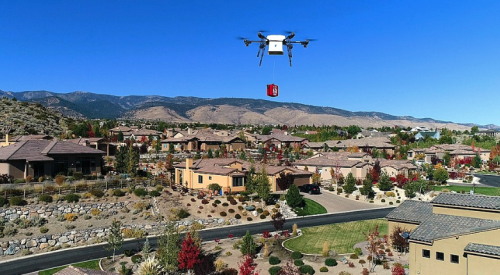As so often happens, while I was searching for something online I came across something else that caught my eye, an article that appeared in Professional Builder in 2000. It began:
“Home building is notoriously stuck in the mud. Throughout history, this industry has stubbornly resisted innovation and new technology. There is some logic behind this. It’s already such a high-risk business, many builders say, so why add the risk of pioneering new methods? However, it’s dangerous to think that way today. The whole world is changing. Customers in this e-commerce era are conditioned to expect rapid progress in the quality of every product. Why should a home, the largest and most expensive item they ever buy, be any different?” (Image: Geralt via Pixabay).
Although it seems that the turn of the millennium occurred just a blink of an eye ago, a tremendous amount has happened in (and to) the housing industry since 2000. We remember most vividly the exhilarating ups and crushing downs, but there have been lots of incremental changes that have affected the way that the business of home building is conducted. Overall, homes have become more energy efficient, sustainable, and healthier, require less maintenance, are increasingly impervious to severe weather conditions, are constructed with much improved materials, inside and out, and most possess new and much-preferred open floor plans and smart home technology. These changes have certainly enhanced today’s new homes, but innovations in digital communication and management tools have altered—and improved—the way that the business itself is being run as well.
But are incremental changes enough to keep the status quo viable? More than a few times over the past couple of years I have heard a number of people say that home building as an industry is “ripe for disruption.” This phrase gets bandied about a lot and is applied to many disparate situations, and not always used correctly. Some conflate disruption with innovation. But disruption is not merely a bigger innovation, it’s a brand new way of getting a job done. Think of shopping on Amazon instead of at retail establishments or how you use that device in your hip pocket instead of the ways we used to communicate with each other. Think about how you used to look things up before there was Google.
Clayton Christensen, a Harvard Business School professor, introduced us to the concept of disruption back in the ’90s, just as it was taking off in a big way. In his book, The Innovator’s Dilemma: When New Technologies Cause Great Firms to Fail, Christensen showed that even companies that implement new technologies and offer great customer service can find themselves becoming obsolete when faced with disruptive innovation. Christensen’s new book, Competing Against Luck, delves deeper into the importance of getting a job done better, using examples such as CVS’ Minute Clinics and Airbnb.
How might this apply to home building? A case study of Uber represents one possibility. The firm not only made getting a ride easier for consumers, but its business model completely sidestepped the biggest expense that taxi companies incur—owning a fleet of cars.
Similarly, it’s in its business model where disruption in home building, if it occurs, is likely to take place. Andrew Weinreich, a tech entrepreneur himself who currently is in the business of predicting opportunities for other startup founders, recently turned his attention to home building. Weinreich, who will be presenting at our Housing Giants Leadership Conference in October, has been studying the industry for a while now and thinks modern home building factories may be in our future. He has identified the challenges a successful factory will have to overcome: cost, quality, customization, and transportation. Can it be done? That remains to be seen, but if so, it may offer the added benefit of alleviating the industry’s biggest, and most intransigent, problem: the labor shortage.













